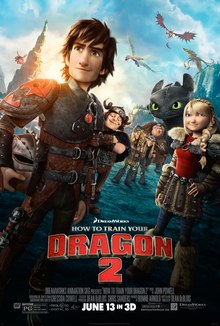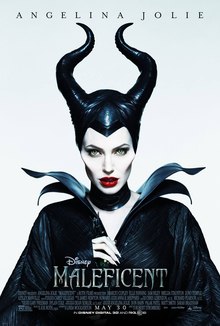Released: June 27th, 2014
Rated: PG-13
Studio: Paramount
Staring: Mark Wahlberg, Stanley Tucci, Kelsey
Grammer, Nicola Peltz, Jack Reynor
Directed by: Michael Bay
Written by: Ehren Kruger
Personal Bias Alert:
haven’t seen anything in
the Transformers line
3.7 of 10
Hearkening
back to my “Captain America: The Winter
Soldier” review, I went into “Age of Extinction” with almost no knowledge of anything
Transformers. I’ve seen none of the
movies or the television show. I don’t
even recall playing with the toys. Now,
that doesn’t mean I went into this movie with an entirely open mind. I know the less-than-stellar reputation that
its director, Michael Bay, has, and I’m aware of the critical punching bag the movie
series has become. It seems to have taken
on the sins of all the dumb, CGI laden explosion fests that have littered our
summer movie screens, with each installment being offered up for the weary,
sardonic critics to rip apart with frustrated ferocity. And yet, people go to see them. Each film has earned more than the last, with
“Age of Extinction’s” predecessor earning over 1 billion dollars. I couldn’t see how a film series with that
kind of earning power could be a complete mess, so I tried to give this film a
fair shot. I set my mind to blockbuster
mode, bought some nachos (I’m not a popcorn fan), and plopped myself down for a
Friday evening romp.
As
we all know, the human cast has been revamped, with Mark Wahlberg’s Cade taking
over as Optimus Prime’s best bud. Cade
and his beautiful daughter, Tessa (Nicola Peltz), get sucked into a battle
between transformers, the CIA, some evil transformer thing named Lockdown, and
a tech corporation. It sounds insane, which
it is, and after 165 minutes I didn’t really understand why they were all
fighting each other. Instead of being
told with a traditional 3-act structure, the film feels like it was told by
that guy who tells all his stories in the “and then this happened, and then this happened, and then THIS happened!”
structure. Sure, there’s a series of
escalating encounters between the groups, but there isn’t a real narrative
reason for why everything hits the fan at once, it just does.
Wahlberg
is a competent lead for the film, with his over-buff physique fitting into the
excess surrounding him remarkably well.
He and the rest of the cast aren’t given anything to do, but he sells
the protective father trope and the nauseatingly bad humor okay. Peltz is given even less to do, but she never
embarrasses herself, unlike her onscreen boyfriend played by Jack Reynor. Reynor is hampered with an awful,
inexplicably Irish character that he fails to make believable or
enjoyable. Other, more established
actors like Kelsey Grammer, Stanley Tucci, and Titus Welliver fare about as
well as Wahlberg, turning in competent performances that will bolster their box
office credibility.
Now
as I said, I went into this film searching for whatever it was that made people
keep coming back to the series, and its saving grace turned out to be exactly
what I thought it would be: the special
effects. They’re dazzling, pulling off
everything from car chases to robots transforming to massive, magnetic
spaceships. It all looks very realistic,
and it actually seems to exist in the same world as the live-action stuff. That’s something that’s not often pulled off,
so a massive amount of credit needs to go to the special effects folks. But don’t discount Michael Bay’s work,
either. He’s a populist filmmaker, and
even if his films aren’t artistically great, he manages to hit on something that
a lot of people like. I didn’t like this
film, but I’m willing to stand up and admit that I liked “Armageddon” when it
came out in 1998 (with the caveat that I was a kid at the time).
As
an adult, I find Bay’s films to be shockingly honest about how dumb he expects the
audience to be. We are led by the hand
through any emotional moments, and the dialogue is filled with characters
stating their most basic thoughts. The
plot is so rudimentary that it almost doesn’t exist as an actual story, instead
playing out as a series of “me want this item, so I go get it” events. The spectacle aspect of it still works just
as well as it did when I was a kid, and I think with some paring down, there is
a harmless, Saturday night basic cable movie in here somewhere.
Other Notes (Silly Blockbuster Version):
Ø How
did Cade’s tiny little weapon matter at all in the last battle?
Ø How
was Cade strong enough to stop Lockdown from crushing him?
Ø Why
did they take the time to show a car flipping around and the tire hitting a
guy’s face midair?
Other
Notes (Regular Version):
Ø Sitting
down to take notes on this movie, I remembered that there was a friend of Cade’s
who died at the beginning. Boy had I
totally forgotten about him.
Ø This
film has a weird idea of freedom. Twice a
group of robots are told that they are free, then in the next breath they are
told that they are under the command of the robot who set them free. That ain’t free.
Ø I
thought Mark Wahlberg’s shirt sleeves were going to pop for sure.
Ø The
product placement is shameless. The
Budweiser scene is obvious enough, but did you notice the Goodyear logo that
was also in the background of that scene?









